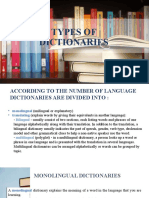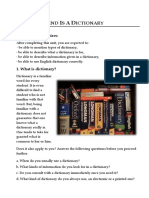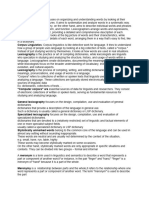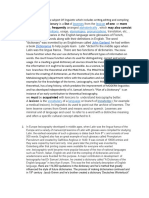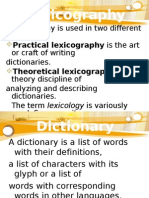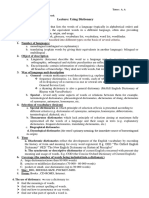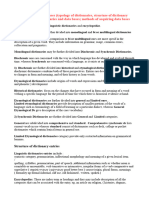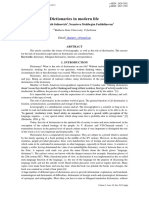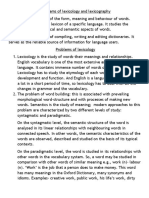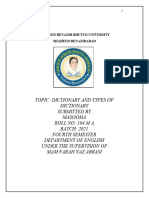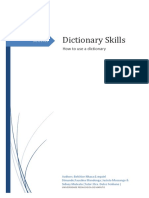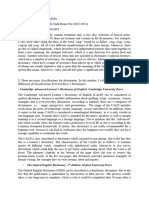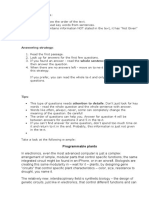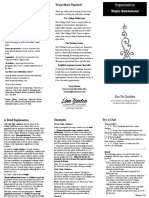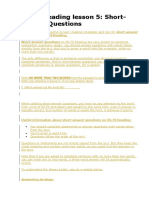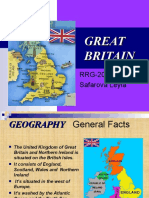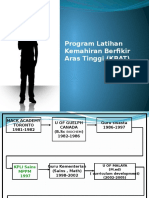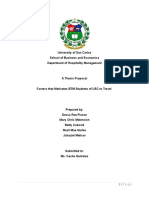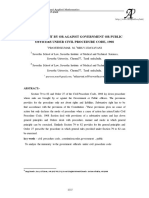0% found this document useful (0 votes)
18 views45 pagesDictionary Lectures
The document outlines various types of dictionaries categorized by language number (monolingual, bilingual, multilingual), object of description (linguistic vs. encyclopaedic), and method of vocabulary selection (general vs. special). It also discusses the time aspect of dictionaries (diachronic vs. synchronic) and their coverage in terms of word count. Additionally, it highlights the different forms dictionaries can take, including books, CD-ROMs, and internet resources.
Uploaded by
Lily S-ovaCopyright
© © All Rights Reserved
We take content rights seriously. If you suspect this is your content, claim it here.
Available Formats
Download as PDF, TXT or read online on Scribd
0% found this document useful (0 votes)
18 views45 pagesDictionary Lectures
The document outlines various types of dictionaries categorized by language number (monolingual, bilingual, multilingual), object of description (linguistic vs. encyclopaedic), and method of vocabulary selection (general vs. special). It also discusses the time aspect of dictionaries (diachronic vs. synchronic) and their coverage in terms of word count. Additionally, it highlights the different forms dictionaries can take, including books, CD-ROMs, and internet resources.
Uploaded by
Lily S-ovaCopyright
© © All Rights Reserved
We take content rights seriously. If you suspect this is your content, claim it here.
Available Formats
Download as PDF, TXT or read online on Scribd
/ 45
